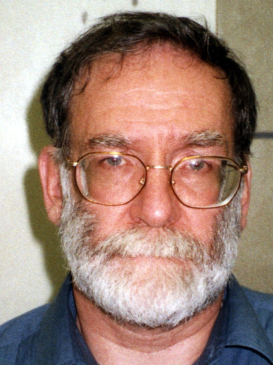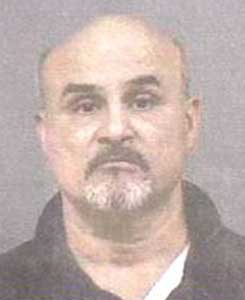
A serial killer is a person who murders three or more people, with the killings taking place over a significant period of time in separate events. Their psychological gratification is the motivation for the killings, and many serial murders involve sexual contact with the victims at different points during the murder process. The United States Federal Bureau of Investigation (FBI) states that the motives of serial killers can include anger, thrill-seeking, financial gain, and attention seeking, and killings may be executed as such. The victims tend to have things in common, such as demographic profile, appearance, gender, or race. As a group, serial killers suffer from a variety of personality disorders. Most are often not adjudicated as insane under the law. Although a serial killer is a distinct classification that differs from that of a mass murderer, spree killer, or contract killer, there are overlaps between them.

Harold Frederick Shipman, known to acquaintances as Fred Shipman, was an English doctor in general practice and serial killer. He is considered to be one of the most prolific serial killers in modern history, with an estimated 284 victims over a period of roughly 30 years. On 31 January 2000, Shipman was convicted of murdering fifteen patients under his care. He was sentenced to life imprisonment with a whole life order. On 13 January 2004, one day before his 58th birthday, Shipman hanged himself in his cell at HM Prison Wakefield, West Yorkshire.
A spree killer is someone who commits a criminal act that involves two or more murders in a short time, often in multiple locations. There are different opinions about what durations of time a killing spree may take place in. The United States Bureau of Justice Statistics has spoken of "almost no time break between murders", but some academics consider that a killing spree may last weeks or months, e.g. the case of Andrew Cunanan, who murdered five people over three months.
Harold Schechter is an American true crime writer who specializes in serial killers. He is a Professor Emeritus at Queens College, City University of New York where he taught classes in American literature and myth criticism for forty-two years. Schechter's essays have appeared in numerous publications including The New York Times, The Wall Street Journal, The Los Angeles Times, and the International Herald Tribune. He is the editor of the Library of America volume, True Crime: An American Anthology. His newest book, published in September 2023, is Murderabilia: A History of Crime in 100 Objects.
A Son of Sam law is a law designed to keep criminals from profiting from the publicity of their crimes; for instance, by selling their stories to publishers. Such laws often authorize the state to seize money earned from deals such as book/film biographies and paid interviews and use it to compensate the criminal's victims.

Bible John is an unidentified serial killer who is believed to have murdered three young women between 1968 and 1969 in Glasgow, Scotland.

Nazi memorabilia are items produced during the height of Nazism in Germany, particularly the years between 1933 and 1945. Nazi memorabilia includes a variety of objects from the material culture of Nazi Germany, especially those featuring swastikas and other Nazi symbolism and imagery or connected to Nazi propaganda. Examples are military and paramilitary uniforms, insignia, coins and banknotes, medals, flags, daggers, guns, posters, contemporary photos, books, publications, and ephemera.
The Stoneman is a name given by the popular English-language print media of Calcutta, India to an unidentified serial killer who murdered at least 13 sleeping homeless people in Calcutta in 1989. The name is also given to the perpetrator of a similar series of murders in Mumbai from 1983 to 1988. It has been speculated that these were the work of the same person, who could have been responsible for as many as 26 murders.

Altemio C. Sanchez, also known as the Bike Path Rapist, was a serial killer, of Puerto Rican decent, who is known to have raped and murdered at least three women, and raped at least 9 to 15 girls and women in and around Buffalo, New York, during a 31-year span from 1975, though perhaps earlier, to 2006. He was apprehended in 2007 through DNA evidence and sentenced to 75 years-to-life, serving 16 years before dying from apparent suicide in 2023.

Theodore John Kaczynski, also known as the Unabomber, was an American mathematician and domestic terrorist. He was a mathematics prodigy, but abandoned his academic career in 1969 to pursue a reclusive primitive lifestyle.
Internet homicide, also called internet assassination, refers to killing in which victim and perpetrator met online, in some cases having known each other previously only through the Internet. Also Internet killer is an appellation found in media reports for a person who broadcasts the crime of murder online or who murders a victim met through the Internet. Depending on the venue used, other terms used in the media are Internet chat room killer, Craigslist killer, Facebook serial killer. Internet homicide can also be part of an Internet suicide pact or consensual homicide. Some commentators believe that reports on these homicides have overemphasized their connection to the Internet.

Anthony Edward Sowell was an American serial killer and rapist known as The Cleveland Strangler. He was convicted in 2011 of murdering 11 women whose bodies were discovered at his Cleveland, Ohio, home in 2009. After being sentenced to death for the murders, Sowell died in prison from a terminal illness.
Serial Killers Ink is a website dedicated to selling "murderabilia" and serial killer art, interviewing convicted serial killers and also serves as a meeting place for those interested or involved in the murderabilia industry.
A serial killer is typically a person who murders three or more persons over a certain period of time.

Francisco Antonio Laureana was a young Argentine man killed by the Buenos Aires police, who believed him to be a rapist and serial killer called The Satyr of San Isidro, who for a period of six months—from 1974 and 1975—raped women, 13 of whom he murdered. He killed most of his victims on Wednesdays and Thursdays near 6:00 p.m.
The Łódź Gay Murderer is an unidentified Polish serial killer who operated in Łódź from 1988 to 1993. He murdered seven men, all of them homosexuals.
Alfred J. Gaynor is an American serial killer and rapist who committed a series of nine murders in the city of Springfield, Massachusetts from 1995 to 1998. For these crimes, Gaynor was subsequently given four sentences of life imprisonment without parole.








